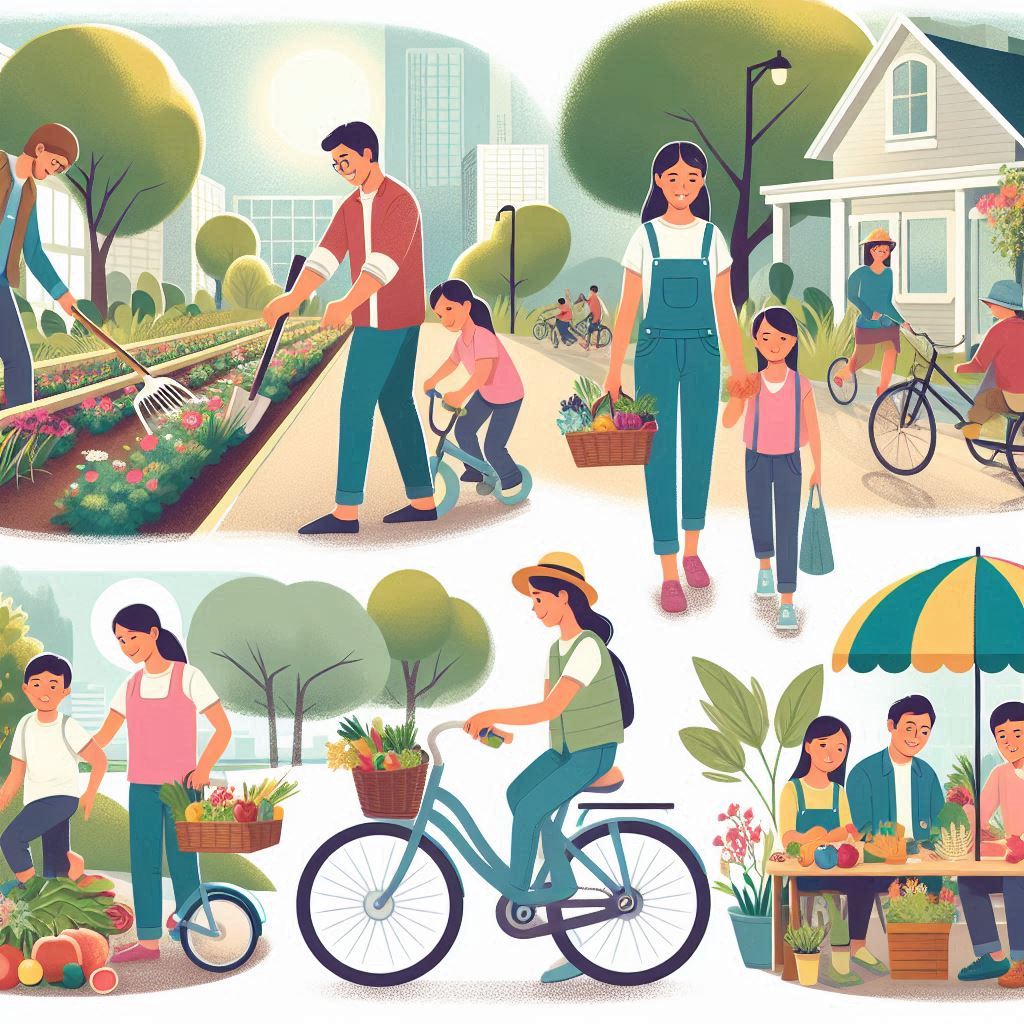
5 Ways Families Can Encourage Eco-Consciousness in Their Communities

*Collaborative Post
Thinking about the planet’s future often starts at home. Families eager to make an eco-friendly impact can begin with simple steps right in their communities.
Engaging in sustainable habits, participating in local projects, and nurturing awareness among children fosters positive change. You don’t need grand gestures; everyday actions make a big difference.
Join us as we explore straightforward ways families can embrace eco-conscious living and inspire others to do the same!
1. Transforming Daily Habits for a Greener Lifestyle
Everyday actions can make a big impact. Start by making small changes in your household routines to foster sustainability. Families might swap single-use plastics for reusable options, conserve water with shorter showers, or set up home recycling stations.
Preparing your own dishes with ingredients procured from nearby farms isn’t just a nod to sustainability by cutting down on packaging – it’s also a solid boost to encouraging better health habits.
Get the kids in on the act; make conservation a playful contest – who can flick off the most lights in vacant rooms?
Together, you learn to value resources and think twice about consumption. These minor adjustments become part of family life and extend beyond the home as kids share their eco-friendly habits with friends and neighbors, promoting wider community awareness of sustainable living practices.
2. Joining or Starting Environmental Clubs in Schools
Families can make a real difference by participating in school-based environmental clubs. These clubs encourage students to learn about sustainability and take action. Parents can volunteer to help organize eco-friendly events or educational workshops.
By becoming active members, families gain insight into community challenges and influence local decision-making. Discussions might include issues like AFFF toxic exposure cases, which highlight the importance of monitoring environmental threats. This awareness prompts communities to advocate for stronger protections.
As families engage with these clubs, they also build connections with other environmentally conscious individuals and organizations.
This network fosters collaborative efforts that extend beyond school grounds, driving meaningful change throughout the entire community while empowering children as future stewards of the earth’s resources.
3. Harnessing the Power of Local Community Gardens
Community gardens offer families a hands-on approach to eco-conscious living. By participating, families cultivate fresh produce while reducing their carbon footprint.
- Nutritional Upgrades: Cultivating your own garden bounty nudges you toward more nutritious dining and lessens your dependence on packaged produce from stores.
- Learning in Action: Children gain direct experience with the growth stages of plants, grasping sustainability concepts and the significance of diverse ecosystems.
Families can join existing community gardens or start one in their neighborhood. This promotes cooperation among neighbors as they share tips and harvests. It also fosters environmental stewardship by demonstrating sustainable practices in action.
By engaging with these projects, families contribute to a collective effort to nurture both their community’s well-being and the environment’s health.
4. Promoting Sustainable Travel Methods
A straightforward adjustment in family travel routines can contribute to cutting down carbon emissions. Opting for walks, bike rides, or public transit on brief jaunts reduces car use and diminishes air pollution. Why not coordinate a “walking school bus” with parents taking turns shepherding local kids to school on foot?
For longer distances, carpooling offers another sustainable solution. Families coordinate schedules to share rides for activities like sports practice or community events. Electric scooters and bikes also provide fun, eco-friendly alternatives for family outings.
These choices save money and teach children about the environmental impact of transportation habits. As families adopt greener commuting methods, they set an example that encourages others in the community to rethink their own travel routines towards more sustainable options.
5. Teaching Kids to Love Nature Through Outdoor Activities
Nature has a way of sparking curiosity and wonder in children. Encourage this by planning frequent outdoor adventures that deepen their connection with the environment.
Plan weekend excursions to neighboring parks for picnics or seek-and-find adventures that bring the local ecosystem to life. Initiate a home-based family garden, guiding children through planting and tending seeds, and observing their progress.
Immerse yourselves in nature with camping ventures: pitch tents beneath the stars, explore paths as you discover wildlife in its natural setting, and revel in tales by the campfire’s glow.
Participating in community clean-up days teaches responsibility as children help care for shared spaces. By embedding these activities into regular routines, families cultivate a love for nature that inspires kids to cherish and protect our planet.
Continuing the Green Journey: Simple Actions, Big Impact
Families hold power in creating lasting environmental change. Small daily actions accumulate to foster sustainable communities and inspire others.
By engaging in eco-friendly practices and educating future generations, families contribute to a greener planet. Every effort matters, proving that meaningful change starts at home with choices we make each day for a healthier world.
*This is a collaborative post. For further information please refer to my disclosure page.




